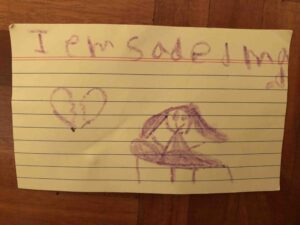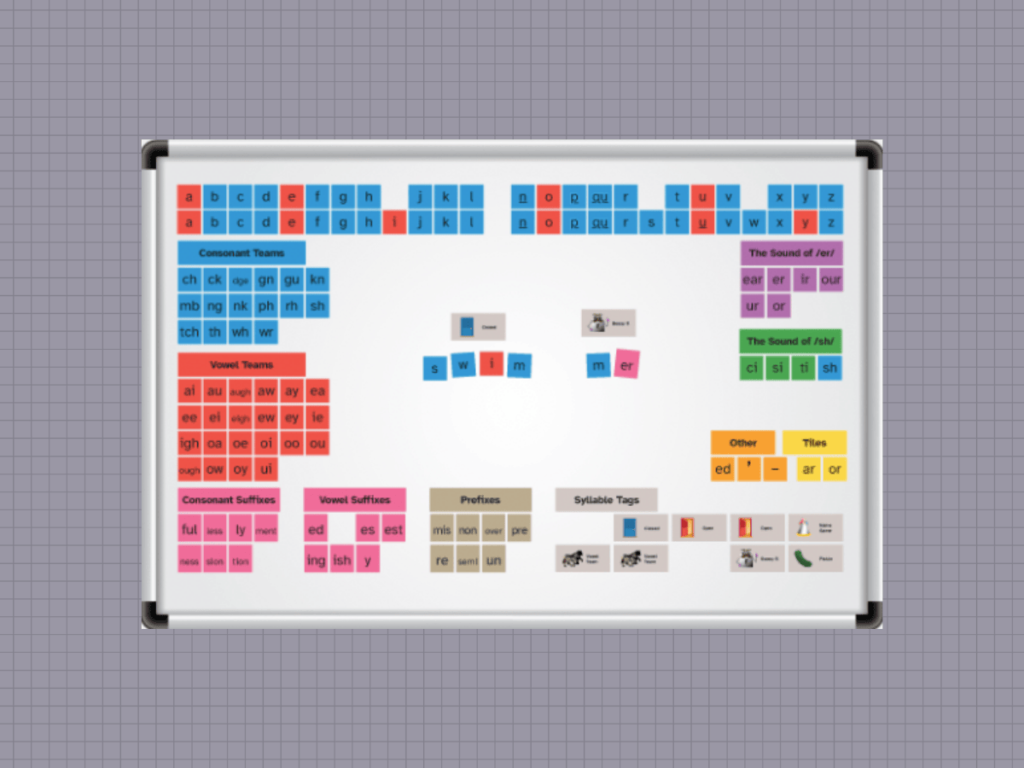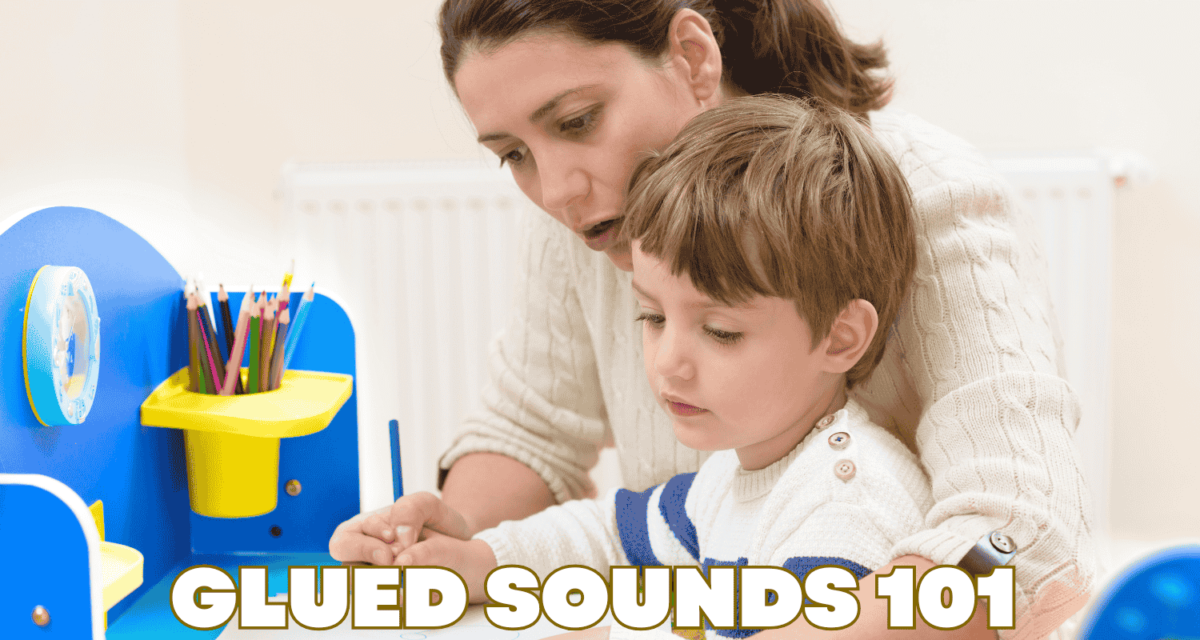Ok, so you’re teaching your beginner reader to read, and you’ve truly done your research…
You’re doing all the right things – You’re introducing letter sounds correctly. You’re using decodable books… But then, a seemingly simple word trips them up: “am”.
They struggle to recognize “am”, as in “I am Sam”. You think it should be an easy word. You sound out the word for them, and they look at you confused, saying “I thought ‘a’ said /ah/”.
Suddenly, you simply don’t know what to say.
Well, your child might have better ears than you do!
Say “I am Sam,” out loud. Do you notice how the /a/ /m/sounds are sort of “glued together”? Do you notice how the letter “a” doesn’t say a pure /ah/ sound, as in “apple”?
It’s very different than how we sound out the individual letters.
These are examples of “welded” or “glued” sounds – sounds that stick together when we say them fluently. Welcome to GLUED SOUNDS or WELDED SOUNDS (this phenomenon goes by either name). Let’s find out all about these strange sounds in today’s article!
If you still struggle to hear the difference, watch this video from 01:00 till 01:10 min! – Already set at minute 01:00 for your convenience!
What are Glued Sounds? A.K.A Welded Sounds
When the letter “a” comes before the letters “n” or “m”, the sound comes through your nose, so it changes a little.
Why? Both “m” and “n” are nasal sounds. This means that the air flows out through the nose when we say them.
When “a” is followed by one of these consonants, the nasal sound can take over and slightly distort the “a” sound.
This can make it seem like the “a” and the following consonant are “glued” or blended together, which is where the term “glued sounds” comes from.
The intensity of the distortion depends a great deal on your accent. Some American English speakers, especially in certain regions in the US, distort/ change this sound a lot.
I don’t believe the distortion is so prominent, for instance, in standard British English.
In Australia, I can hear this distortion quite clearly, but not in everybody. I’m not sure if this varies among different regions in Australia, but what I know for sure is that where I lived in Australia, I could hear a mix.
Kids’ Ears: Tuned in to Subtle Sounds
It’s amazing for us, adults, but children’s ears are really fine tuned to hear these subtle differences!
For instance, take a look at the note my youngest daughter wrote to her sister! Notice how she wrote the words “am” and “and”. Exactly how we pronounce them because of the “glued sound” effect.
In fact, could it be that the more fine-tuned they are, the more confusion language can create at times?
And… Why was she “sad” and “mad”? Well, story for another day!

Should we teach glued sounds explicitly to all children?
It depends.
Sorry, I know that this probably isn’t the straightforward answer you wanted to hear, but let me explain!
In my opinion, if you can avoid it, if this distortion is not so prominent in your accent or in the way you speak, don’t teach it. It just adds to the cognitive load your child will have to deal with!
Besides, you are probably still at the very beginning of their reading journey. So, better to keep it as simple as possible!
We are going to have to teach them so many other things already (digraphs, “r” controlled vowels, vowel teams, and so much more) that my personal preference is to be very explicit, but also as minimalist as I can…
Especially with young children when they are starting out!
However, this is also something for you to know, to keep in mind, and reveal to your kid or your student if you see it’s causing confusion.
On top of that, when you switch your focus from reading to spelling it’s super useful to know the root cause behind these mistakes, so you can speak about them with your child or student knowing exactly why they are happening.
Are there more glued sounds that I should be aware of?
Many people also include “ng” and “nk,” as glued sounds.
-ang (as in “sang”)
-ing (as in “sing”)
-ong (as in “long”)
-ung (as in “sung”)
And
-ank (as in “bank”)
-ink (as in “pink”)
-onk (as in “honk”)
-unk (as in “chunk”)
Again, in these groups of letters the individual sound of each letter can’t be so clearly heard, as they are glued.
However, this is very much accent dependent once more.
For instance, I’ve heard some British English speakers that clearly pronounce the “g” sound in words like “sing” or “strong.” So much so, that you can’t really talk about glued sounds with them here at all.
Some people also include the “all” sounds here – tall, small, fall, call. However, my personal preference is to speak about spelling patterns.
Why?
While the letter “l” clearly seems to be responsible for distorting the sound of ‘a’ in these words, the problem is that the letter “l” doesn’t always distort the sound of the “preceding” a in the same way…
On top of that, it can also be silent, at times. Think of words like “palm,” “balm,” “almond,” “half,” or “calf.”
Can you hear the “l” in these words? The answer is no.
Is the sound the same as in all, fall or mall? The answer is no, again.
That’s why I prefer to talk about spelling patterns here.
How to Teach Glued Sounds?
“am” and “an”
As mentioned before, the first step is for you to decide whether you’ll need to teach “am” and “an” words. This is going to totally depend on your accent.
If the sound “a” is nasalized in your accent, then go ahead a prepare a separate lesson for these sounds. Explain how the letters “m” and “n” make the “a” sound sound a little different.
Sample words you can use with beginner readers:
“an” – an, can, fan, man, pan, tan, van.
“am” – ham, jam, Sam, cam
“-ng” and “-nk”
It is very likely you are going to need to teach these explicitly, as most accents nasalize -ng and -nk words.
The strategies I use with glued sounds look pretty similar to the ones I use with “digraphs.” Remember this is when two letters team up to make a new sound (a completely different one!)
There’s a slight difference in what’s going to with glued sounds. You can use this easily explanation with your children: Glued sounds are when two letters are really hard to separate when you are reading. They stick like glue and really want to be said together. They are best buddies.
Sample Lesson to Teach Glued Sounds
Explain what glued sounds are (refer to the simple explanation given earlier)
Take sample words that include glued sounds, and make sure your students hear the sound.
Some sample words you can use are:
-ng words: song, sang, sing, long, lung, king, rang, ring, wing.
-nk words: bank, bunk, link, sank, sink, pink.
Introduce more words containing these sounds, and ask your students to mark the glued sounds -highlight/circle the glued sounds- and read the words out loud to you.
Optional: You could also introduce some words that do not contain glued sounds, and ask them to tell you whether those words contain glued sounds or not. This way, you’ll make sure they have truly understood the new teaching.
Read decodable passages or stories that have words containing glued sounds. (Optional: again, you can make them highlight the glued sounds before getting started reading the passages)
Reinforcement ideas:
- Dictation with glued sound words.
- Explicit orthographic mapping activities, using phonogram or grapheme tiles.
You can use a simple piece of paper, some manipulatives (chips, counters) and create your own phonogram tiles. You can download our Orthographic mapping template from our Library of Free Resources.

Orthographic Mapping Template – available from our library of free resources.
Or you can go fancier, and use a magnetic board, and some magnetic phonogram tiles, like these ones from AAR or these ones from LOE.

All About Reading Grapheme Tiles
You may also be interested in our Digital Grapheme Tiles
Digital scramble Activities. IDEA: Target a glued sound word. Mix up the grapheme tiles, and get your child to build up the target word by putting the grapheme tiles in the right order. Learn more in this video!
Conclusion
In conclusion, teaching “am” and “an” glued sounds to beginner readers can be beneficial, but it’s not always necessary for every child or accent.
While some children can pick up on subtle sound differences, the decision to teach these sounds explicitly should depend on how prominent the sound distortion is in your specific accent.
Introducing glued sounds like “-ng” and “-nk” is normally necessary, as these patterns are common across many accents.
Use the sample lesson as a guide to teach glued sounds explicitly, practice and reinforce with decodable books, and add optional activities, if necessary.

Hey there! I’m Laura – an author, YouTuber, blogger, and the creator of the “Learning Reading Hub” platform. I created this space to dive into the world of reading instruction and to shout from the rooftops about how vital it is to use the right methods for teaching reading. I’ve got a TEYL certification (Teaching English to Young Learners), plus a Journalism degree from the University of Navarra in Spain, along with a Master’s Degree in Communication.
I’ve always loved digging into research, jotting down my thoughts, connecting with people, and sharing what makes me tick. With a background in marketing, digital projects, and the education scene (especially language learning), I’m all about wearing different hats.
When my first kid needed to learn how to read, it opened my eyes to the challenges and complexities involved. This journey took me through a rollercoaster of self-teaching, eye-opening discoveries, and yeah, some letdowns too. There’s so much conflicting info out there, along with methods that just don’t cut it. And let’s face it, these issues are way too common.
Now, I’m all about channeling that passion (without sounding like a know-it-all!) and sharing my journey. My mission? Making it easier for those who are on the same path I once was.
My heart’s with my family and the amazing Learning Reading Hub project. I live with my husband and two little ones, raising them in a bi-lingual environment (English and Spanish).

